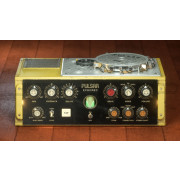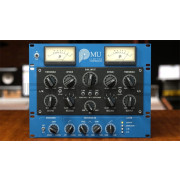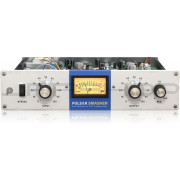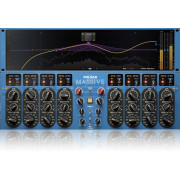You're currently on:
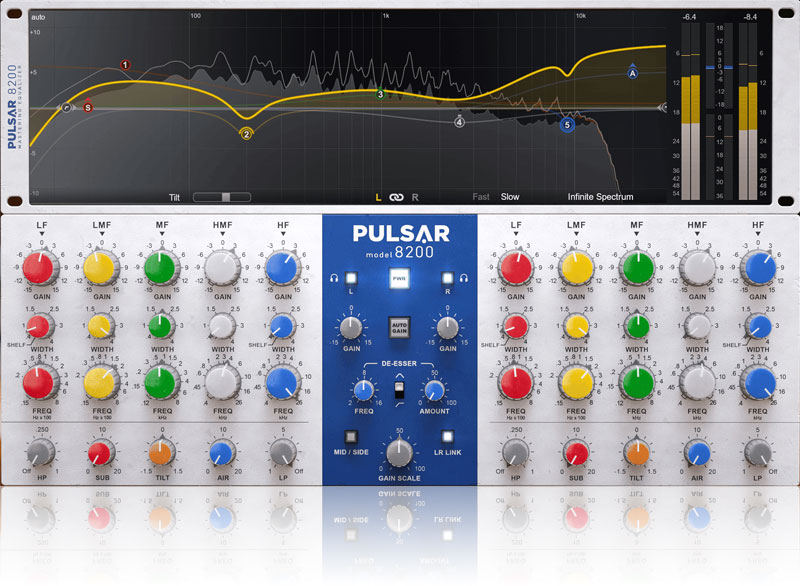
Pulsar 8200
LEGENDARY TRANSPARENCY




AN UPDATED LEGEND
The best-of-both-worlds approach – old and modern
Pulsar 8200 comes with a complete on-screen curve editor and spectrum analyzer. This best-of-both-worlds approach gives an accurate overview of your EQ changes while highlighting the singular behaviors of the original unit. The easy-to-use graphic interface allows for a much faster workflow in mixing applications.

Get a polished result by removing sibilance and harshness as part of your EQ process thanks to the built-in de-esser. Tame aggressive vocal sibilance or control high-frequency transients in overheads with Frequency, Amount and Band Type controls.

Pulsar 8200 is a component-accurate model of the original unit, perfectly emulating its original unique filters shapes and parallel EQ behavior, producing natural-sounding corrections even for EQ moves that other units would struggle to keep up with.

Go further than the hardware with more Pulsar-added benefits. We’ve added high and low-cut filtering, a Tilt filter to adjust the overall tonal balance of the entire spectrum, and Air and Sub bands to operate at the extreme ends of the audio range.

Pulsar 8200 takes full advantage of modern CPUs to do more with less. Despite the tremendous amount of complexity in its audio algorithms, you’ll be able to use numerous instances. The resizable interface, coupled with the generous offering of modern features, will make Pulsar 8200 your go-to transparent EQ.

IMPROVING ON A CLASSIC
Pulsar 8200 is a component-accurate model of the original unit, perfectly emulating its original unique filters shapes and parallel EQ behavior, producing natural-sounding corrections even for EQ moves that other units would struggle to keep up with.
Go further than the hardware with more Pulsar-added benefits. We’ve added high and low-cut filtering, a Tilt filter to adjust the overall tonal balance of the entire spectrum, and Air and Sub bands to operate at the extreme ends of the audio range.
Pulsar 8200 takes full advantage of modern CPUs to do more with less. Despite the tremendous amount of complexity in its audio algorithms, you’ll be able to use numerous instances. The resizable interface, coupled with the generous offering of modern features, will make Pulsar 8200 your go-to transparent EQ.
HOW DOES IT SOUND?
Mastering
Precise & versatile, Pulsar 8200 is the superstar EQ of your master bus. It offers clinical precision when you want to open up the side and focus the center of your mix. The tilt feature allows you to effortlessly adjust the tonal balance of your mix. You can easily create complex EQ curves that can take your mixes and masters from slightly corrected to noticeably polished.
Orchestral / Acoustic
Designed to enhance the natural and lively character of acoustic instruments, live recordings, organic percussion, and vocals. Its filter shapes and parallel topology make Pulsar 8200 ideal for fine-tuning acoustic pianos and carving out specific frequencies to reveal the instrument's full potential. With this EQ, you can easily maintain the natural and ‘living’ feel of acoustic sources, ensuring that your mix sounds great every time.
Electronic Music
Whether you’re fighting the war for loudness or just pushing the frontiers of what bass can do, shaping low-end frequencies in a kick-drum or a bass track is essential, especially in electronic music or modern pop. Pulsar 8200 is a game-changer in this endeavor thanks to its unparalleled sonic accuracy. You can even make subsonic corrections (15Hz) to achieve a cleaner and more powerful low end.
Vocals & Guitars
Make vocals shine by removing the sibilants between 6 and 8 kHz thanks to the onboard de-esser. This feature can also be used to gently compress the harmonic content of an electric guitar track that is overly aggressive in the 2k to 4kHz range, preserving the energy of the highs while eliminating any bothersome frequencies.
Main Features

Visual curve editing
Manipulate a peculiarly shaped analog EQ curve in an intuitive way. The curve editor is extremely easy to use, with a clear and concise overall frequency response display. You can edit all properties of any filter – including its assigned name – without touching the lower panel.

De-esser
An embedded simple-but-efficient de-esser gives you full control over the aggressive or harsh transients of the spectrum, to get a more polished and professional result. In the central panel, choose the frequency, the amount, and the filter type (bell or shelf).

Mid-Side processing
Make EQ changes to a signal’s centre or stereo information by operating in mid/side mode. The Listen buttons help audition each signal in isolation, and the screen displays only the channel you’re working on, so you always know what you’re doing.

Auto-gain

Tilt filter
Some things can’t be done with just bells and shelves. We’ve added a complex 6-pole tilt filter to adjust the tonal balance of your whole mix in a natural and analog-style way with a single knob.

Sub & Air band
The Air & Sub bands, inspired by the philosophy of parallel passive equalizers, allow you to fine-tune the extreme high-end and low-end of the spectrum without adding any mud or harshness.

Metering & Spectrum analyser
The on-screen analyzer displays the audio spectrum in real-time (fast and slow window settings) or over the long-term with the Infinite Spectrum setting. In addition, peak metering provides insight into overall dynamics, and RMS meters let you monitor loudness and level matching. An overall gain meter is also available.

Gain scale
For wholesale reduction or increases in gain, the Gain Scale control lets you accentuate or reduce an entire EQ curve, acting like a multiplier for all bands’ gain settings.System Requirements
CPU
- Intel Core i3 / i5 / i7 / i9 / Xeon or AMD Quad-Core minimum
Memory
- 4 GB RAM
- 1 GB free disk space
Operating System
- Windows 7 with SP1 64 bit
- Windows 8.1 64 bit
- Windows 10 64 bit
GPU
- OpengGL 2.0 compatible GPU
Monitor
- Resolution: minimum 1024×768, recommended 1920×1080
- Refresh rate: 60 Hz
CPU
- Intel Core i3 / i5 / i7 / Xeon / Apple Silicon (M1)
Memory
- 4 GB RAM
- 1 GB free disk space
Operating System
- MacOS 10.9 and higher
GPU
- OpengGL 2.0 compatible GPU
Monitor
- Resolution: minimum 1024×768, recommended 1920×1080
- Refresh rate: 60 Hz
Compatible plugin formats

AAX Native
Windows: 32/64 bits
Mac: 64 bits only

Audio Unit
64 bits only

VST 2.4
Windows: 32/64 bits
Mac: 64 bits only

VST 3
Windows: 32/64 bits
Mac: 64 bits only
| Variant | 1 |









